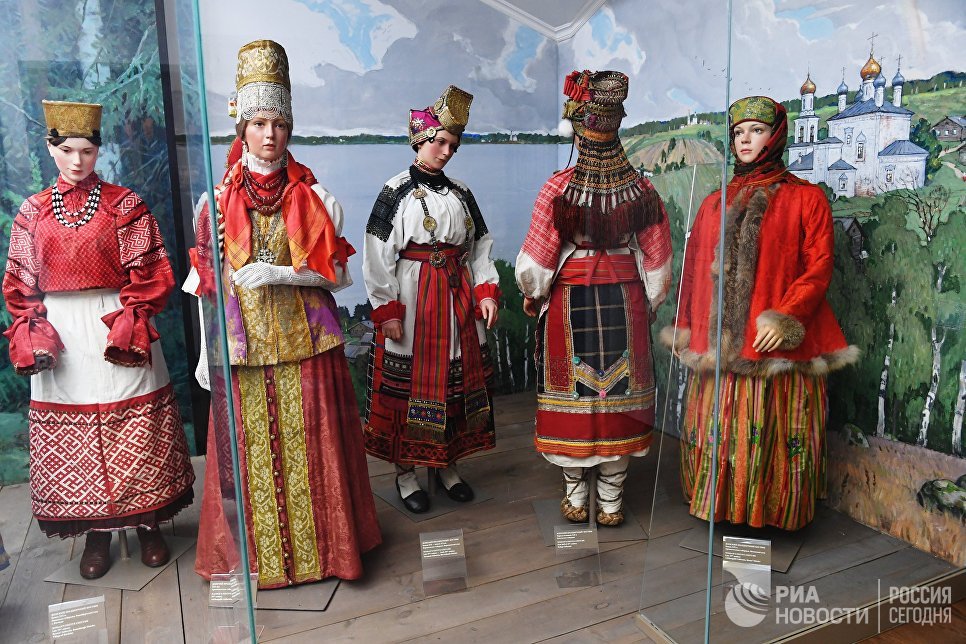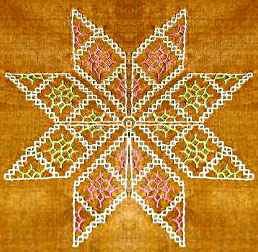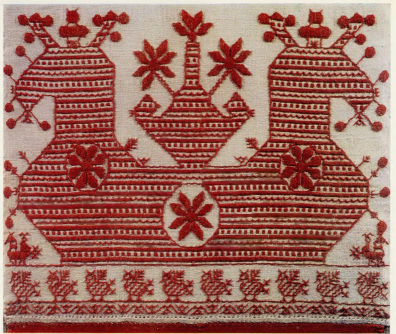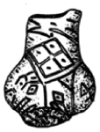Recently I was reading a couple of books about Russian linguistics and the authors kept mentioning the book India & Russia - Linguistic & Cultural Affinity (Chandigarh, India: Roma Publications, 1982) written by Indian linguist Weer Rajendra Rishi. I was able to find only a small part of it and from what I read the linguistic connection between Sanskrit and Russian might indeed be much deeper than between Sanskrit and any other Indo-European language. So here are some interesting excerpts:
As mentioned in the preceding chapter both Russian and Sanskrit belong to the satem group of the Indo-European family of languages. This, however, creates one misunderstanding in one’s mind that the relation between Sanskrit and Russian is as distant one as that between Sansksit and other Indo-European languages. As will be explained in this chapter, the relation between these two languages is very close and correspondence between these two languages is so minute that, to use Dr. Sidheshwar Varma’s words, it cannot be a mere chance. The facts unfolded in this chapter are compulsory enough to lead us to conclude that during some period of history, the speakers of Sanskrit and Russian have lived close together.
In the sphere of vocabulary, there is such a large number of words which are common to these two languages that it has
not been possible to mention all of them in this chapter. Only a list of basic words common to both these two languages has
been given. Moreover, as explained in the succeeding paragraphs of this chapter many of the grammatical rules are
common to both these languages and the number of words common to these two languages formed after the application of
such common grammar rules could be further multiplied. This is not so when we compare Sanskrit with any other language
belonging to the Indo-European group, leaving aside Iranian and Persian...
That the melodiousness of the rhythm of the Russain folk lore and the Sanskrit verse synchronises with each other is confirmed by a news item published in the Soviet Land (No. 2 of January 1968) published by the Information Services of the Embassy of the USSR in India, New Delhi. It is stated that the style of the verse of Russian folk legends and Puskin's tales is closer to the rhythm of Sanskrit verse. Professor Smirnov (1892- 1967), the reputed Sanskritologist of the Soviet Union has translated Mahiibharata into Russian in this type of verse...
The origin of the Russian word gorod (Old Slavonic grad) meaning 'city' can also be traced. Originally in ancient Russia and in India the cities were built to serve as forts for protection and defence against aggression from an enemy. The corresponding word in Hindi is gadh which actually means 'fort'. In modern Russian the suffix -grad and in modern Hindi the suffix -gadh is used to form names of cities e.g. in Russia Leningrad (the city of Lenin), Peterograd (the city of Peter) and in India Bahadurgadh (the city of the Braves), Fategadh (the city of Victory).
In addition to the common vocabulary and common rules of grammar, even the methods of expression are common e.g. in Russian the word for 'year' is god. When used with numerals 'five' or more. the plural god used is let (which means 'summer'). 'He is hundred years of age' will be expressed in Russian as emu sto let (literally he is of hundred summers). This is also the case in Sanskrit. Varsha is the Sanskrit word for 'year'. But in Vedic hymns the plural word used for this is sarada (literally meaning 'autumn') e.g. in a prayer hymn it is said j'ircma sarada satam {May we live for hundred years - literally hundred autumns).
Both the Russian and Sanskrit languages are inflective i.e. nouns, pronouns, adjectives etc. are inflected or declined to give meanings of different cases in both singular and plural. Similarly, the verbs are also conjugated for use with 1st, 2nd and 3rd persons, singular and plural. Owing to this, the word order is more elastic and variable than in English, French or German. Inversion of sentence order i.e. object first, then verb and subject does not make any difference viz. in Russian malchika lyubili vse (all loved the child). Here the object malchika declined in accusative case has come first followed by the verb lyubili (loved) and the subject vse (all) in the end. This sentence could also be written in the usual order i.e. subject, verb and then the object vse lyubili malchika and also lyubili vse malchika etc. Similar is the case with Sanskrit...
Similarly to express means of transport, the noun is used in the instrumental case in both Russian and Sanskrit. In Russian "by train" will be translated poezdom (instrumental case of the noun poezd) and in Sanskrit 'by chariot' will be translated as rathena (instrumental case). Similarly both in Russian and in Sanskrit instrumental case is used in sentences like on pishet perom (he writes with a pen). Here perom is used in the instrumental case. In Sanskrit the sentence 'he plays with dice' will be expressed as akshai kri<fati. Here also akshai is in the instrumental case...
We will now examine the grammar rules which are common to both Russian and Sanskrit
Alphabet
The Russian alphabet contains tvyordi znilk (hard sign) 'ъ' This is also called 'separator' in English and is used mainly after prefixes ending in a hard consonant before the letters ya. ye, yo and yu. It indicates that the preceding consonant is hard (non-palatized). It is found in the middle of a word only, before a soft vowel (in compound words), where it shows that this soft vowel is sounded as a pure vowe] and that its softness has not been absorbed by the consonant before the tvyordi znak sign. In some texts this 'ъ' is replaced by an apostrophe (') in Roman transliteration e.g. ob'yasnit (to explain), ob'yom (size), sub'yekt (subject). Sanskrit has also got a similar sign 'S' called avagraha or 'separator'. This is used in printed texts to mark the elision of initial a after final e or c...
It is interesting to see that the separation sign both in Russian and Sanskrit are represented by almost identical signs 'ъ' in Russian and 'S' in Sanskrit and both are replaced by apostrophe (') in Roman transliteration.
Nouns pronouns and adjectives
Both in Russian and in Sanskrit nouns, pronouns and adjectives are declined into various cases according to number, singular and plural. It may be pointed out here that Sanskrit has in addition dual number (for two persons or things). The use of dual number is found in Old Slavonic but has disappeared in Russian as a regular grammatical feature.
Russian has the following cases:
Nominative Genetive Dative Accusative Instrumen and Locative
Sanskrit has the following cases : Nominative Accusative Instrumental Dative Ablative Genetive Locative Vocative
It will be seen that Russian has no ablative case. In Sanskrit ablative case is used to denote the sense of 'separa tion' e.g.' the flowers are falling from the creeper'. Here the 'creeper' in Sanskrit will be declined into ablative case. This sense is conveyed in Russian by using genetive case. In Russian, the vocative or exclamation case, has now been merged in the nominative. Only a few nouns have retained the vocative case e.g. Bog ! (god, nominative) and Bozhe !; (O God in vocative case) ; Gospod (Lord in nominative case) and Gospody, (O Lord in vocative case), Khristos (Christ in nominative case) and Khriste (O Christ in vocative case).
There are many· similarities between the Russian and Sanskrit declensions of nouns and pronouns. The similarities are enumerated as under.




Prefixes

Suffixes


Relations (Russian - Sanskrit - English)



This small excerpt from the book (it's only the 2nd chapter) can be found here.
As mentioned in the preceding chapter both Russian and Sanskrit belong to the satem group of the Indo-European family of languages. This, however, creates one misunderstanding in one’s mind that the relation between Sanskrit and Russian is as distant one as that between Sansksit and other Indo-European languages. As will be explained in this chapter, the relation between these two languages is very close and correspondence between these two languages is so minute that, to use Dr. Sidheshwar Varma’s words, it cannot be a mere chance. The facts unfolded in this chapter are compulsory enough to lead us to conclude that during some period of history, the speakers of Sanskrit and Russian have lived close together.
In the sphere of vocabulary, there is such a large number of words which are common to these two languages that it has
not been possible to mention all of them in this chapter. Only a list of basic words common to both these two languages has
been given. Moreover, as explained in the succeeding paragraphs of this chapter many of the grammatical rules are
common to both these languages and the number of words common to these two languages formed after the application of
such common grammar rules could be further multiplied. This is not so when we compare Sanskrit with any other language
belonging to the Indo-European group, leaving aside Iranian and Persian...
That the melodiousness of the rhythm of the Russain folk lore and the Sanskrit verse synchronises with each other is confirmed by a news item published in the Soviet Land (No. 2 of January 1968) published by the Information Services of the Embassy of the USSR in India, New Delhi. It is stated that the style of the verse of Russian folk legends and Puskin's tales is closer to the rhythm of Sanskrit verse. Professor Smirnov (1892- 1967), the reputed Sanskritologist of the Soviet Union has translated Mahiibharata into Russian in this type of verse...
The origin of the Russian word gorod (Old Slavonic grad) meaning 'city' can also be traced. Originally in ancient Russia and in India the cities were built to serve as forts for protection and defence against aggression from an enemy. The corresponding word in Hindi is gadh which actually means 'fort'. In modern Russian the suffix -grad and in modern Hindi the suffix -gadh is used to form names of cities e.g. in Russia Leningrad (the city of Lenin), Peterograd (the city of Peter) and in India Bahadurgadh (the city of the Braves), Fategadh (the city of Victory).
In addition to the common vocabulary and common rules of grammar, even the methods of expression are common e.g. in Russian the word for 'year' is god. When used with numerals 'five' or more. the plural god used is let (which means 'summer'). 'He is hundred years of age' will be expressed in Russian as emu sto let (literally he is of hundred summers). This is also the case in Sanskrit. Varsha is the Sanskrit word for 'year'. But in Vedic hymns the plural word used for this is sarada (literally meaning 'autumn') e.g. in a prayer hymn it is said j'ircma sarada satam {May we live for hundred years - literally hundred autumns).
Both the Russian and Sanskrit languages are inflective i.e. nouns, pronouns, adjectives etc. are inflected or declined to give meanings of different cases in both singular and plural. Similarly, the verbs are also conjugated for use with 1st, 2nd and 3rd persons, singular and plural. Owing to this, the word order is more elastic and variable than in English, French or German. Inversion of sentence order i.e. object first, then verb and subject does not make any difference viz. in Russian malchika lyubili vse (all loved the child). Here the object malchika declined in accusative case has come first followed by the verb lyubili (loved) and the subject vse (all) in the end. This sentence could also be written in the usual order i.e. subject, verb and then the object vse lyubili malchika and also lyubili vse malchika etc. Similar is the case with Sanskrit...
Similarly to express means of transport, the noun is used in the instrumental case in both Russian and Sanskrit. In Russian "by train" will be translated poezdom (instrumental case of the noun poezd) and in Sanskrit 'by chariot' will be translated as rathena (instrumental case). Similarly both in Russian and in Sanskrit instrumental case is used in sentences like on pishet perom (he writes with a pen). Here perom is used in the instrumental case. In Sanskrit the sentence 'he plays with dice' will be expressed as akshai kri<fati. Here also akshai is in the instrumental case...
We will now examine the grammar rules which are common to both Russian and Sanskrit
Alphabet
The Russian alphabet contains tvyordi znilk (hard sign) 'ъ' This is also called 'separator' in English and is used mainly after prefixes ending in a hard consonant before the letters ya. ye, yo and yu. It indicates that the preceding consonant is hard (non-palatized). It is found in the middle of a word only, before a soft vowel (in compound words), where it shows that this soft vowel is sounded as a pure vowe] and that its softness has not been absorbed by the consonant before the tvyordi znak sign. In some texts this 'ъ' is replaced by an apostrophe (') in Roman transliteration e.g. ob'yasnit (to explain), ob'yom (size), sub'yekt (subject). Sanskrit has also got a similar sign 'S' called avagraha or 'separator'. This is used in printed texts to mark the elision of initial a after final e or c...
It is interesting to see that the separation sign both in Russian and Sanskrit are represented by almost identical signs 'ъ' in Russian and 'S' in Sanskrit and both are replaced by apostrophe (') in Roman transliteration.
Nouns pronouns and adjectives
Both in Russian and in Sanskrit nouns, pronouns and adjectives are declined into various cases according to number, singular and plural. It may be pointed out here that Sanskrit has in addition dual number (for two persons or things). The use of dual number is found in Old Slavonic but has disappeared in Russian as a regular grammatical feature.
Russian has the following cases:
Nominative Genetive Dative Accusative Instrumen and Locative
Sanskrit has the following cases : Nominative Accusative Instrumental Dative Ablative Genetive Locative Vocative
It will be seen that Russian has no ablative case. In Sanskrit ablative case is used to denote the sense of 'separa tion' e.g.' the flowers are falling from the creeper'. Here the 'creeper' in Sanskrit will be declined into ablative case. This sense is conveyed in Russian by using genetive case. In Russian, the vocative or exclamation case, has now been merged in the nominative. Only a few nouns have retained the vocative case e.g. Bog ! (god, nominative) and Bozhe !; (O God in vocative case) ; Gospod (Lord in nominative case) and Gospody, (O Lord in vocative case), Khristos (Christ in nominative case) and Khriste (O Christ in vocative case).
There are many· similarities between the Russian and Sanskrit declensions of nouns and pronouns. The similarities are enumerated as under.
Prefixes
Suffixes
Relations (Russian - Sanskrit - English)
This small excerpt from the book (it's only the 2nd chapter) can be found here.







 . Yet, if there was ever "irreducible complexity", I would say that's in language. It's hard to imagine dissociating pure words from syntax, concepts, articulation, perception, abstract thinking, "mental grammar", etc.
. Yet, if there was ever "irreducible complexity", I would say that's in language. It's hard to imagine dissociating pure words from syntax, concepts, articulation, perception, abstract thinking, "mental grammar", etc.

